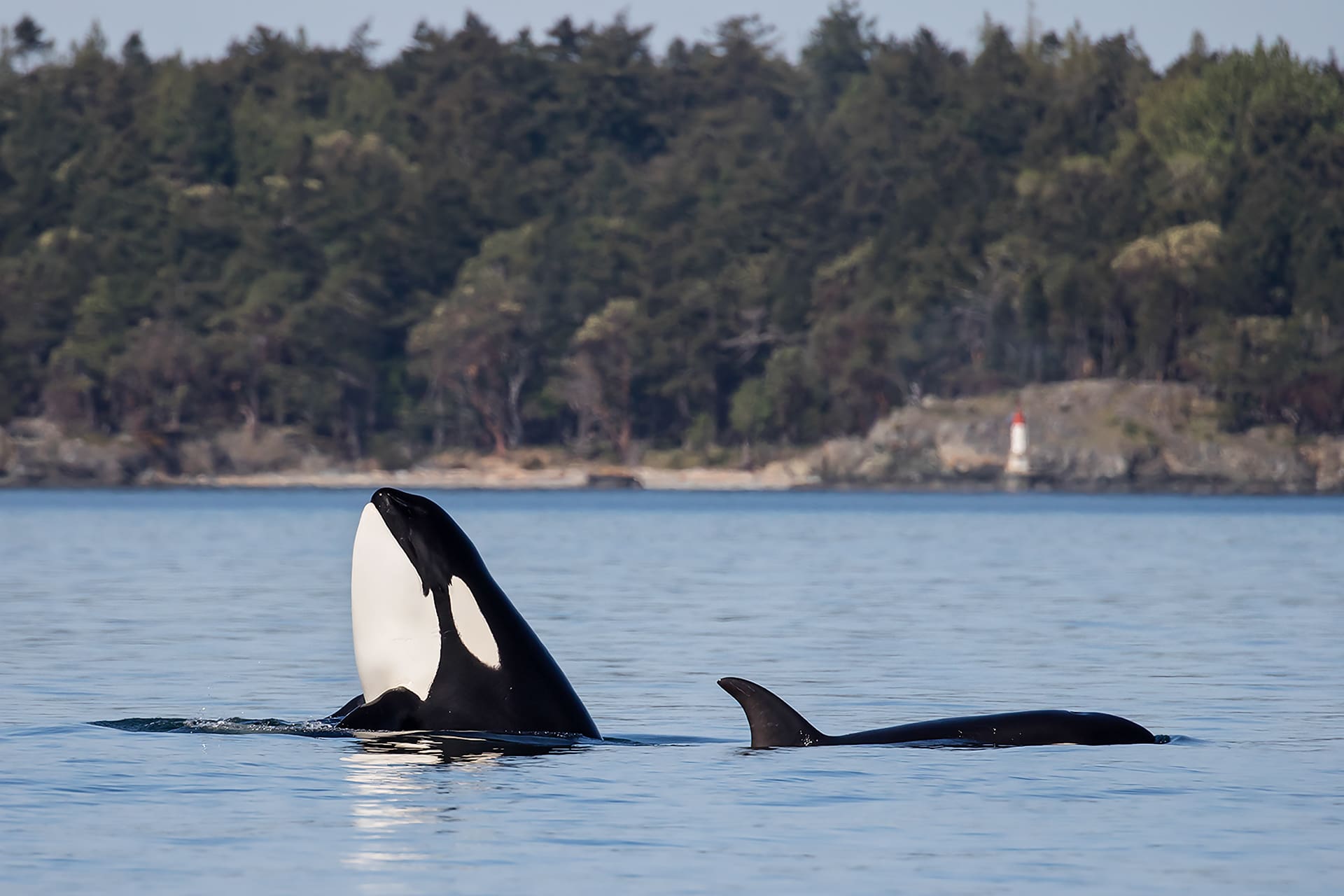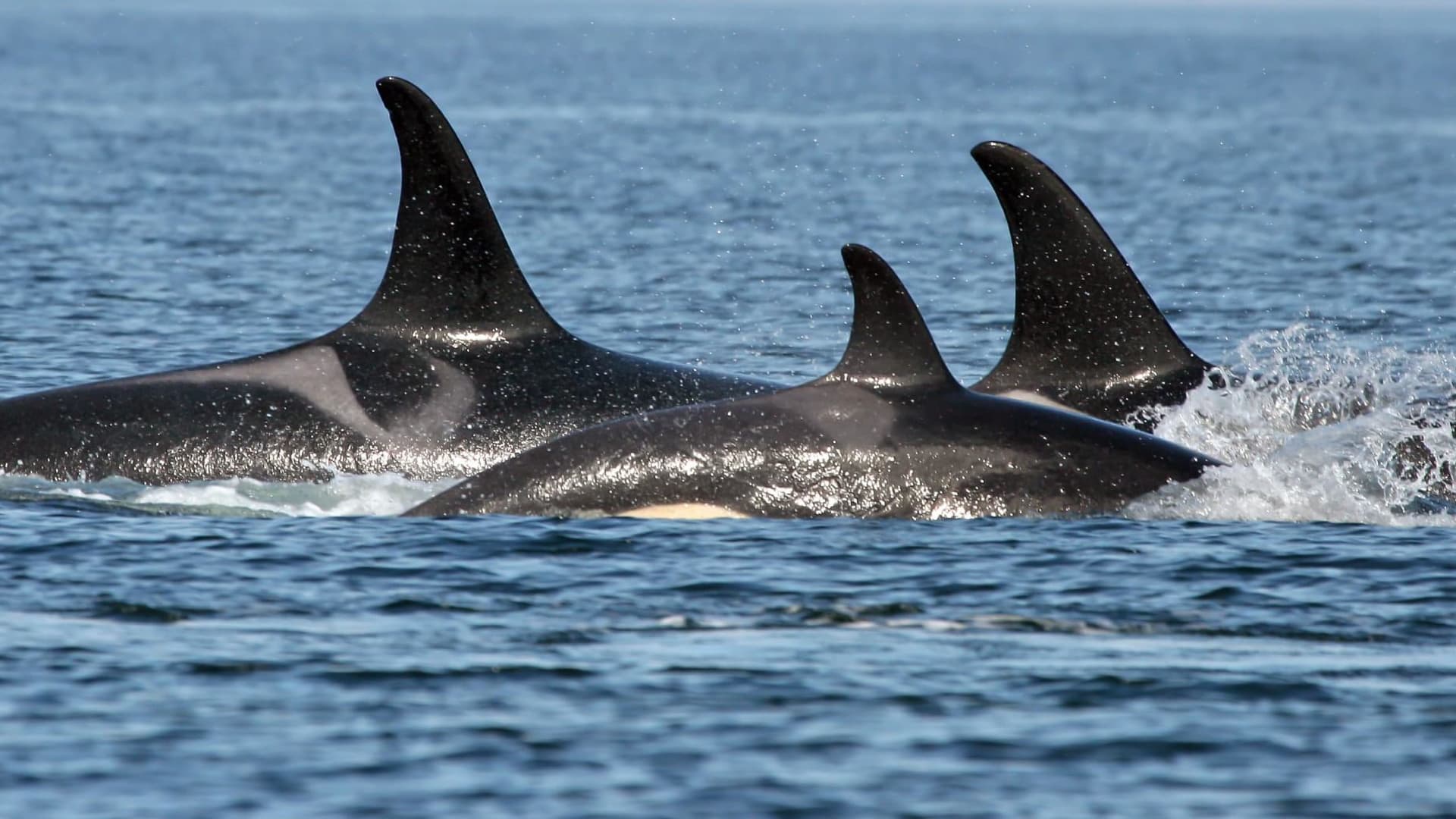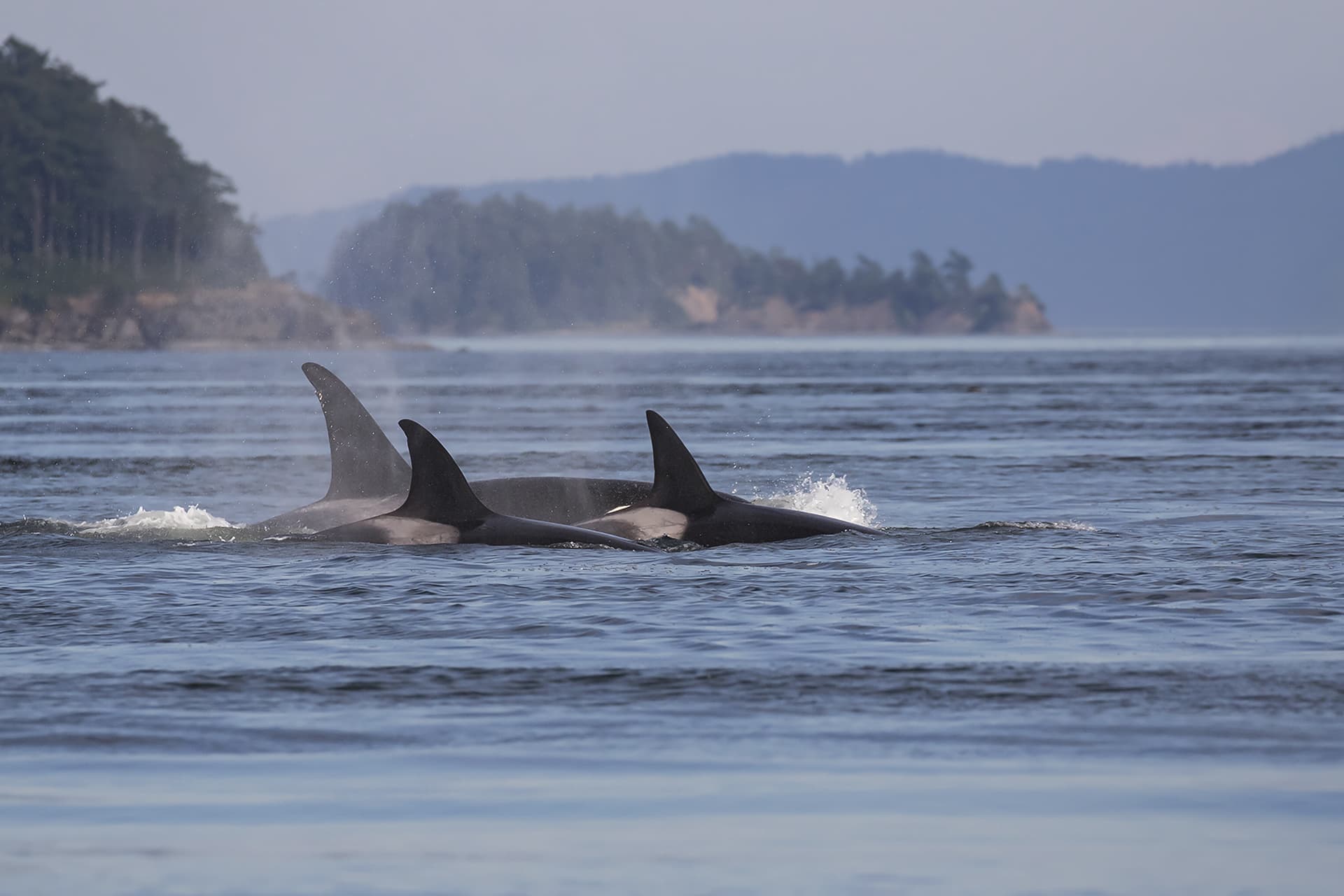
The Southern and Northern Resident killer whales of the Pacific Northwest depend on the same prey for survival—Chinook, or King salmon. While these populations have overlapping home ranges, prior research suggests that Northern Residents spend more time in the Southern Residents’ range than expected, potentially fishing in waters believed to be critical to these endangered whales’ survival.
Research by NOAA Fisheries published in March 2021, reveals new understanding of how these two communities coexist and hunt in the same waters, but can avoid competing for their favorite food. These unique populations—who do not interact or even speak the same language—appear to “share” Washington State coastal waters, by hunting at different Chinook salmon hot spots, at different times of year.
Tracking orcas is difficult, according to these researchers, “due to their highly mobile nature and large home ranges”, and the Southern Residents are no exception, their range is vast, stretching from British Columbia to northern California. Observing them with consistency can be difficult, as they can reach speeds of 30 mph and have been known to travel 75 miles in a single day. Researchers added that, “visual monitoring is limited by expense, shortened daylight hours, remote locations and unfavorable weather conditions.”
Fortunately these extensive ocean travelers are highly vocal, using unique calls and echolocation clicks while traveling, socializing, and especially while hunting. This is why ‘eavesdropping’ with EARs—Ecological Acoustic Recorders—is invaluable, enabling researchers to record at 15 underwater locations along the Washington State coast, both near and offshore, from 2014 to 2017.
Researchers suspected these two killer whale populations would avoid competition for food, and in order to assess this, they grouped EARs locations into categories such as, by distance from shore, and northern and southern-most locations near key salmon rivers.
As Northern and Southern Resident killer whales do not speak the same language, this allowed researchers to analyze recordings by comparing them to a catalog of “pod and population specific calls.”
Recordings were grouped by EARs location, as well as population, and analyzed to determine frequency and duration of visits, at all locations, each month of the year.
In total, researchers collected 429 recordings of resident killer whales, totaling over 900 hours! Although over 60% of the recordings were of Southern Residents, they were only responsible for 50% of the total recorded hours, indicating that Northern Residents stayed longer each visit.
Southern Residents were detected every month except August, while Northern Residents were heard year-round, which is far more than previously recognized. The researchers noted the number and length of recordings of Northern Residents was “indicating more extensive use of Washington coast than previously reported”.
Same Meal, Different Restaurants
These recordings show visits from both Northern and Southern Residents every month throughout these coastal areas, but also an increase in both frequency and duration of visits during spring and fall, as Chinook return to home rivers to spawn.
These recordings showed that the Southern Residents visited most frequently in the spring, heard at inshore recording locations closest to the Columbia River, while the Northern Residents visited most frequently during fall, and were offshore, and almost exclusively recorded closer to the Frasier River in the north.
Although both populations were heard at most locations, the timing and duration of their visits suggests Northern Residents are feeding more offshore in the fall on Frasier River Chinook, while the Southern Residents are feeding more inshore on Columbia River Chinook, and in the spring.
Researchers concluded that this “different place at different times behavior” is comparable to “other populations with similar prey preferences [that] can partition to reduce competitive interactions.” In other words, they have divided up the resource—habitat and food—in time, and space.
Mother and grandmother killer whales share their catch, as well as passing down experience and cultural wisdom to their offspring, and now this research suggests that Northern and Southern Residents also share preferred hunting grounds.

Northern Resident Killer Whales
The importance of Columbia River Chinook—as shown in diet studies—was again reflected in this research: locations where important seasonal Chinook salmon runs occur, are essential to filling the bellies of the endangered Southern Residents. In 2021, foraging areas close to river mouths were protected as habitat critical to these whales’ survival. Coincidentally these rivers are home to some populations of Chinook most in need of restoration and protection.
Continued below...
Since this research ended in 2017, the Southern Residents’ travel patterns have dramatically shifted, with weeks of absence from their regular summer feeding grounds in the Salish Sea, and a likely shift to these coastal feeding grounds. With continued use of EARs, we can increase our understanding of their foraging needs in these waters. Researchers noted that these orca detections were during seasons when visual monitoring is difficult, and so shows the importance of listening.
It is critical to provide fisheries managers with the information they need to manage Chinook fisheries to provide more salmon for the Southern Residents, in the right place, and at the right time. This is key to saving them from extinction.






